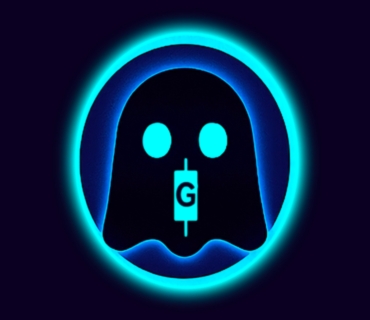What Shipped
In the world of blockchain and cryptocurrencies, several exciting updates and developments have emerged recently. Notably, Etherfuse is working on a project to bring 100 sovereign currencies onchain. This means they aim to represent different national currencies digitally on blockchain networks, which could make cross-border payments faster and more transparent.
Stellar, a blockchain platform known for fast and low-cost transactions, released its Protocol 24 upgrade. Upgrades like these often improve network efficiency, security, and add new features to help developers build better applications.
In addition, Stellar held its i³ Awards 2025, recognizing innovative projects and builders in its ecosystem. These awards highlight the vibrant community and ongoing innovation within the Stellar network.
Chainlink, a decentralized oracle network that connects blockchains to real-world data, shared its Q3 2025 quarterly review, showcasing progress and new partnerships. Chainlink also won the Swift Hackathon 2025 Business Challenge, an achievement that shows growing adoption of blockchain technology in traditional finance.
On the institutional side, JPMorgan completed its first blockchain-based private fund transaction. This marks a significant step toward tokenization, a process where real-world assets are represented digitally on blockchains, making transactions more efficient and transparent.
Lastly, developers from The Graph, a decentralized indexing protocol, launched the “ampersend” dashboard to manage payments for AI agents, showing how blockchain is integrating with emerging technologies like artificial intelligence.
Why It Matters
These developments matter because they show how blockchain technology is moving beyond just cryptocurrencies to real-world applications that can affect everyday financial activities. For example, representing national currencies on blockchain (like Etherfuse aims to do) can simplify international trade and remittances by reducing costs and delays associated with traditional banking.
Upgrades like Stellar’s Protocol 24 improve the reliability and speed of transactions, making blockchain platforms more attractive for businesses and developers. When networks run smoothly and securely, it encourages more innovation and adoption.
Chainlink’s work as an oracle provider is crucial because blockchains on their own cannot access real-world information (like stock prices or weather data). By connecting blockchains to external data sources, Chainlink enables smart contracts to execute based on real-time information, expanding what decentralized applications can do.
JPMorgan’s blockchain-based private fund transaction is a strong signal that major financial institutions are embracing tokenization. Tokenization can unlock liquidity in traditionally illiquid assets, allowing investors to buy and sell fractions of assets more easily and securely.
The integration of AI and blockchain, as seen with The Graph’s new dashboard, opens new possibilities for managing digital services and payments automatically and transparently, benefiting both creators and users.
Builders’ Corner
If you’re interested in getting involved or learning more about these projects, here are some concrete examples and resources:
- Etherfuse: Explore how sovereign currencies can be represented onchain by following their updates and considering how digital currencies might impact your local economy.
- Stellar Protocol 24: Developers can check out the Protocol 24 Upgrade Guide to understand new features and compatibility considerations.
- Chainlink: Review their Q3 2025 review to see how data oracles are evolving and how you might integrate real-world data into your smart contracts.
- Tokenization: The JPMorgan transaction is a great case study in how traditional finance is adopting blockchain; keep an eye on new announcements and consider the benefits of tokenized assets for diversification.
- AI and Blockchain: The Graph’s ampersend dashboard shows how blockchain can manage payments for AI services — a useful concept for developers interested in decentralized finance (DeFi) and AI.
Quick Prices
While prices fluctuate, here’s a quick snapshot of some popular cryptocurrencies as of October 30, 2025:
- Bitcoin (BTC): $107,900 (down about 3% in 24 hours)
- Ethereum (ETH): $3,770 (down about 5%)
- Ripple (XRP): $2.46 (down almost 6.6%)
- Stellar (XLM): $0.298 (down nearly 6.8%)
- Hedera Hashgraph (HBAR): $0.194 (down about 2.7%)
- Flare Networks (FLR): $0.016 (down about 4.6%)
- XDC Network (XDC): $0.058 (down about 4%)
Although prices have seen some declines recently, it’s important to remember that volatility is normal in crypto markets. Long-term growth is supported by ongoing technological advances and increasing adoption.
What to Watch
Looking ahead, here are some areas worth keeping an eye on:
- Sovereign Currencies Onchain: Follow Etherfuse and similar projects as they attempt to bridge traditional money with blockchain technology, potentially changing how money moves globally.
- Blockchain Upgrades: Networks like Stellar continue to improve; watch for more upgrades that enhance speed, security, and developer tools, which can drive new applications.
- Institutional Tokenization: JPMorgan’s move may inspire other banks and funds to use blockchain for asset management, increasing market efficiency and transparency.
- AI and Blockchain Collaboration: As AI becomes more integrated with blockchain, new products and services will emerge, creating opportunities for investors and developers alike.
- DeFi and Real-World Data: Chainlink’s advances in oracles will keep expanding the range of decentralized applications that can interact with real-world events, making smart contracts more useful.
TL;DR: Recent blockchain news highlights exciting progress in bringing real-world currencies onchain, network upgrades like Stellar’s Protocol 24, and growing institutional adoption with JPMorgan’s blockchain fund transaction. Chainlink continues to improve data connectivity for smart contracts, while innovative tools like The Graph’s ampersend dashboard merge AI and blockchain. Despite short-term price dips, these developments point to a stronger, more integrated blockchain future with many opportunities for investors and builders.



Add comment
You must be logged in to post a comment.